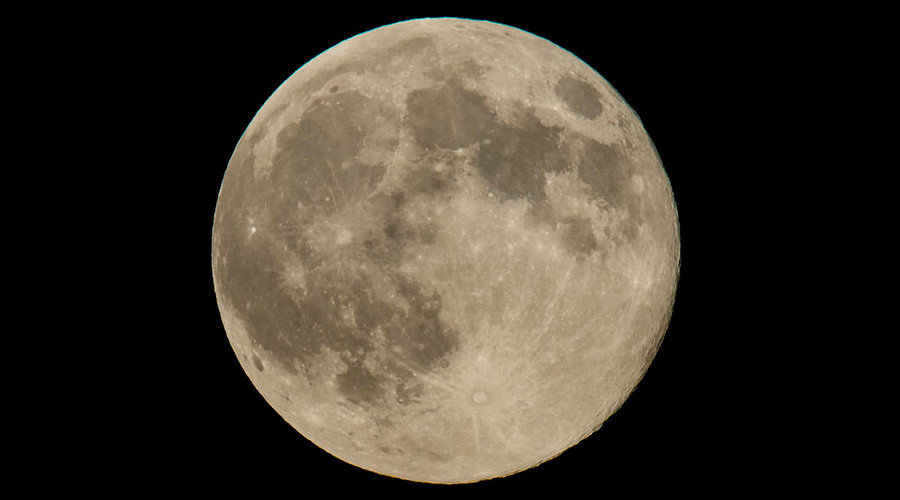
© NASA
Do not be alarmed if you find yourself struggling to fall asleep tonight, for there could be a perfectly scientific reason for your insomnia.
Hovering outside your window will be the biggest and brightest moon the planet has seen since January 1948 - a scientific phenomenon that takes place only when a full moon coincides with the moon being the closest it gets to us on its orbit.
Clouds permitting, the "supermoon" will look around 14 per cent larger and 30 per cent brighter than the average full moon. It will be the closest the moon has been to Earth for more than 60 years, and the closest it will come until November 2034.So what does it mean? According to astrologers a supermoon is simply an intensified new moon or full moon - a time to focus on new beginnings. But when a supermoon is involved these new starts can take on an even more dramatic tone. Some even see them as omens of impending disaster, or a warning of something momentous coming towards us.
Aside from mythical meanings and unfounded alarmist proclamations,
any full moon - never mind a supermoon as big as this - has long been seen as having the ability to trigger emotional reactions and extreme behaviour.And while it may be easy to scoff, these theories have been given added credence in recent years by claims that there is a spike in admissions to hospitals when the moon is full, and by police forces reporting a rise in crime.
Just last month, the Wall Street Journal reported that nearly all the staff in a hospital in Connecticut were convinced that a full moon ensured they had a busy night ahead of them.
Meanwhile, a study published in the World Journal of Surgery in 2011 found that more than 40 per cent of medical staff believed lunar phases had an impact on human behaviour and, in 2007, Sussex Police announced that they would put extra officers on patrol on nights when the moon was full, following research that showed "a correlation between violent incidents and full moons".
One theory is that the water in our bodies is affected by the movement of the moon in much the same way as its gravitational pull controls the tides. As the fluid in our body shifts, it tips the balance in our minds, which can trigger extreme emotions.The "lunar effect", though, has been rubbished by a series of studies which have found no statistical correlation between lunar phases and events such as births, deaths, suicides, violence and psychiatric hospital admissions. However, says Dr Niall McCrae, a lecturer in mental health at King's College London and the author of 'The Moon and Madness', we should not dismiss the moon's effect so swiftly.
Although he agrees the idea that our internal waters have some sort of tidal motion is "unfounded", Dr McCrae points to studies that have shown the impact of moonlight on sleep as a feasible demonstration of the moon's effect on the brain.
Swiss researchers found in 2013 that, on average, people slept for 20 minutes less when there was a full moon. It may not sound like much, but such differences might well be the reason for the centuries-old association of lunacy with lunar cycles.
"A brief loss of sleep might mean very little to you or I," Dr McCrae says. "But for somebody of a condition like bipolar affective disorder [formerly known as manic depression] who may be on the cusp of going into a manic phase, that could be a significant trigger.
"For someone with mental health problems, it can be something that sets off a more significant episode of psychological distress."
As part of his research into his second book, a history of mental health nursing, Dr McCrae spoke to former nurses who worked at
old mental asylums more than half a century ago. "Anyone who worked in those institutions, old nurses and guards, they will tell you with utter conviction that there was a lunar effect on wards at night," he says. "But because they weren't observing in a scientific way, their observations have been dismissed as anecdotal."
In many ways, it is not too hard imagine. Often, these asylums were built up on hills away from the lights and pollution of towns, had dozens of a patients in a single dormitory and nothing covering the windows. "If there was a full moon, a mental hospital was the best place to see a change in the light," Dr McCrae says.
Picture, then, a "supermoon" shining outside their window. If the light kept just one or two patients awake, it could easily lead to others being disturbed. In turn, that could cause irritability, fighting, or trigger a mental episode. As Dr McCrae says, "it's not quite so unbelievable, is it?"
So as tonight's phenomenon shines bright, head outside to marvel at its majesty. After you have had your fill, though, once you are back indoors and in your bed - don't forget to pull those curtains extra tight.
Reader Comments
"Which do you think is farther away ... Florida or the moon?"
The other blonde turns and says "Helloooooooooo, can you see Florida ...?"
I owned and operated a popular live music nightclub for almost a decade. We always looked upon full moons with apprehension. Sometimes it brought out the craziness, other times it was the opposite, a calming laid back behavior in the public. Never could predict in advance, but it was always a noticeable change in behaviors.
The Capris - There's a Moon Out Tonight (1961)....[Link]